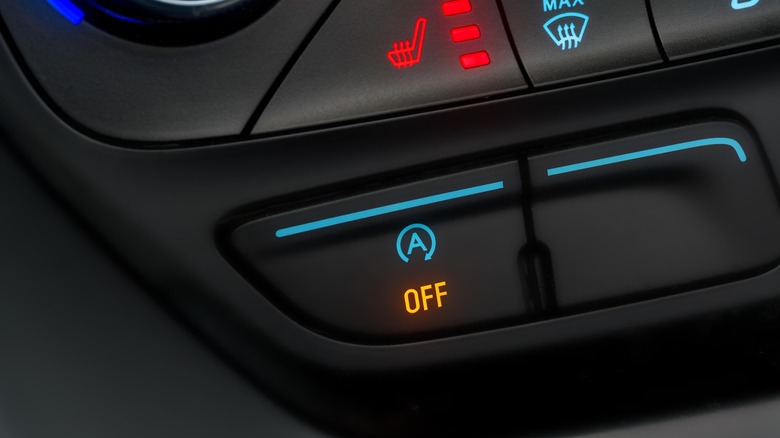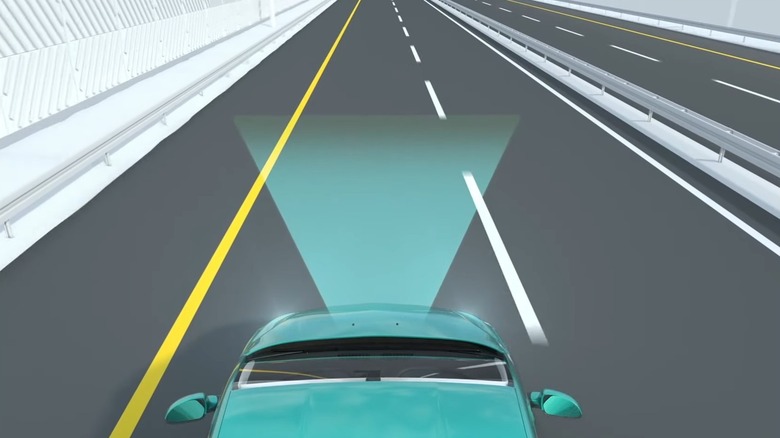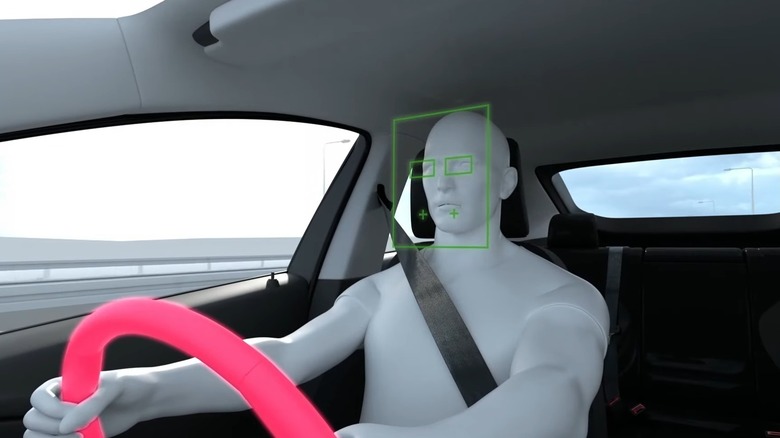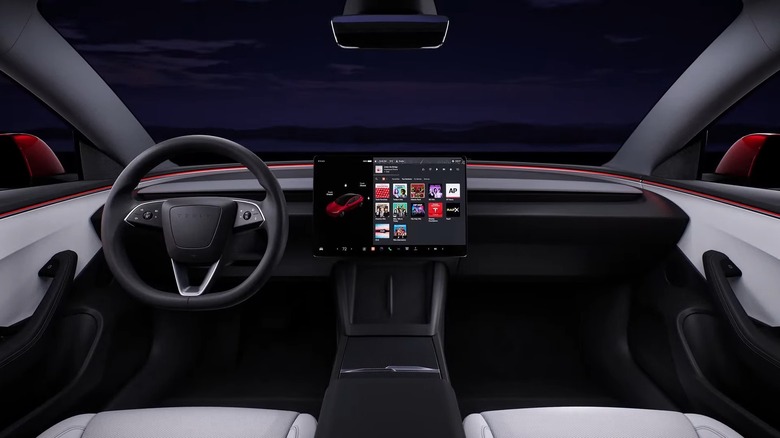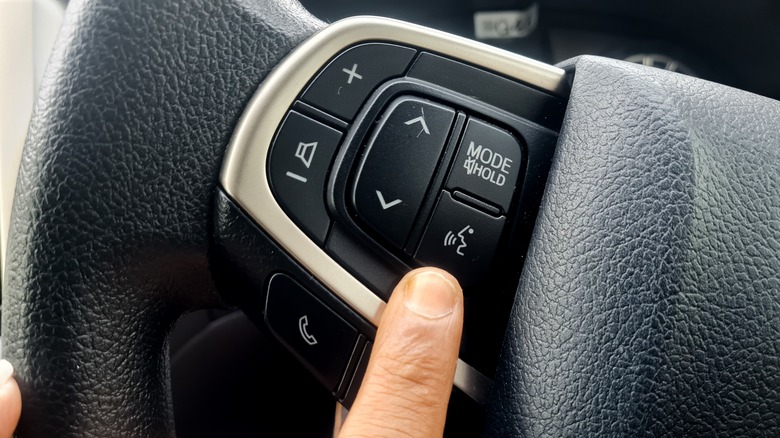5 Annoying Car Features We Want Gone
Looking back at automobiles from the 20th century, you'll find features like manual crank windows, a CD or cassette player, and manual transmissions, among other elements. Reminiscing on the '90s, one of the most luxurious add-ons you could get was an analog car phone, which by today's standards is a laughably bulky and completely unnecessary accessory.
Today, many features are automated; dashboards now feature digital displays and media touchscreens that wirelessly connect to your smartphone, and some models even offer limited self-driving capabilities. Safety features have advanced significantly with cutting-edge driver assistance technology that utilizes sensors and cameras to help enhance spatial awareness and intervene in emergency situations. A few of these technologies were even predicted in Hollywood fiction long ago, such as AI-equipped navigation seen in old-school sci-fi "Star Wars" — the tech that has become a reality.
While many modern vehicle features have made our daily commutes more convenient, efficient, and safer, some of them can also be quite bothersome, to the point we might want them gone (at least in their current form). Though designed with good intentions, these high-tech additions come with limitations and can create unintended problems. Features like auto start-stop, lane-keeping systems, the absence of tactile buttons and dials, driver attention warnings, and voice command control can all cause the average driver a bit of frustration.
Auto start-stop
The auto start-stop system seems like a great idea. Your car automatically detects when it's appropriate to briefly shut off (like when stopped at a traffic light), reducing idling emissions and fuel usage, before starting back up when you let off the brake pedal. And it can get you better mileage with an increase of between 7.27% and 26.4%, according to testing by the Society Of Automotive Engineers, per Consumer Reports. Still, many drivers wonder: Is auto start-stop bad for your engine?
Cleaner air and less cash out of your wallet for fueling up sounds great, so what's the issue? First, many automakers have the auto start-stop enabled by default. Meaning that every time you start the engine, you'll need to manually turn it off if you don't like it. Unfortunately, automakers won't allow you to permanently turn off the feature because it's crucial for the best EPA mileage figures during testing.
Another issue is that some auto start-stop systems introduce a small delay before switching the engine back on. While waiting for a red traffic light to turn green, a minor pause before being able to accelerate isn't much of an issue. However, in situations where you might be turning onto a roadway in an intersection without a light, you might need to act quickly to safely merge. In such a situation, even a brief pause after releasing the brake pedal can throw off your timing.
Lane keeping assist
The technology behind the lane keep assist feature is impressive. It uses cameras that can identify lane markers and automatically re-center a vehicle that is drifting to one side or the other. The National Highway Traffic Safety Administration (NHTSA) examined the events that led to around 7,000 car accidents in the mid-2000s and found that 43 involved a vehicle drifting out of its lane, resulting in fatal consequences. In many of these situations, perhaps lane keeping technology might have prevented a tragic outcome, so how could anyone find this safety feature annoying?
Unfortunately, lane keep assist doesn't always work properly, which leaves the driver and safety system wrestling back and forth for control over the car. For example, particularly on two-lane country roads, you might need to pass slow farm machinery that's pulled to the side of the road or provide some extra room for a pedestrian. The problem is that many lane keep assist systems don't recognize you're moving outside of your lane to avoid hitting someone and will try to steer you back to the center.
The technology also struggles when the road lines are faded, or the weather obscures visibility. Fortunately, most vehicles allow you to disable this driver assistance feature. But, these concerns leave many drivers questioning – is lane assist actually worth it? And do we really need it?
Driver attention warnings
According to the NHTSA, distracted driving was responsible for 3,308 fatal accident deaths in 2022. There are a number of things competing for your attention when behind the wheel, such as other passengers, phone calls, notifications, or even a brief glance at your vehicle's media screen to adjust settings, just to name a few.
There are different types of driver attention warning systems. Some monitoring behaviors such as lane drifting and frequent, sudden corrections, while others use an interior camera pointed at the driver's face. If drowsy or unfocused behavior is detected, the car will start warning the driver with messages and suggestions to take a break. If unheeded, these notifications eventually trigger audible beeps and can even cause the steering wheel to vibrate in order to alert the driver.
If distracted driving is so dangerous, isn't the driver attention technology a good thing? Well, it can be, but it also can create some problems which become a distraction of their own. For example, something as simple as wearing sunglasses can cause some of these safety systems to falsely conclude you're distracted because they can't detect your eyes. Some drivers argue that these attention warning elements are far too sensitive, scolding them for things like glancing over their shoulder to ensure the next lane is clear. At some point, you have to consider if the distractions created by the driver's attention warning system itself aren't also a travel hazard.
Lack of tactile buttons, knobs, and dials
Say what you will about the visual style of the old-school oversized buttons and large turning knobs of classic dashboards; at least you could adjust nearly everything without taking your eyes off the road. You could feel the buttons depress, and the incremental clicks of the round dials reverberated through your fingertips as you changed the car's settings. Now, modern vehicle interiors have more displays and less tactile controls than ever before, which is sleek-looking in a modern minimalist sense. But are more screens and fewer buttons in cars really that safe?
While touch-sensitive toggles and touchscreen menus look more futuristic, they don't always feel better. Take some newer EVs, for example. Many have virtually no physical buttons and include one large media display that controls nearly everything. If you are unfamiliar with specific media interfaces, something as simple as adjusting the climate controls in a Tesla can leave you fumbling through menus just to change the temperature.
Some touchscreens can also overheat, take extra time to load between selections, and be difficult to read when the sunlight strikes the glass at just the right angle for blinding glare. It isn't that these media screens should go away completely, as they provide several benefits, especially around navigation. But it would be nice to also have the option of physical controls in certain scenarios.
Voice commands
Modern automotive voice command systems sound like a great idea and could be a solution to simplifying dashboard controls, especially when automakers are moving away from buttons and dials. While this technology is more sophisticated than ever before, in daily practice, it leaves many drivers sour due to some common issues.
First, on account of background noise, you might need to repeat yourself multiple times. While some vehicles include additional sound-dampening materials and acoustic glass, many do not. So, it can be a challenge just being understood near road construction or trying to talk over the sound of rain drops hitting the car.
To compound matters, some voice-activated controls require very specific phrasing, which isn't always easy to recall at the moment. For example, to cool the interior temperature, some Honda models use the phrase "air conditioner on," not "turn on air conditioner," or "activate air conditioner." Say you want to increase the flow of air out of the vents, is it "turn up air conditioner?" "Increase airflow?" Or "more airflow?" Nope, it's actually "fan speed up."
This technology has improved tremendously, but it still often takes more time than simply pressing a button — defeating its original purpose. Perhaps with more advanced processing capability, voice command technology will one day offer nearly seamless functionality, but until then, many drivers won't bother with it.

